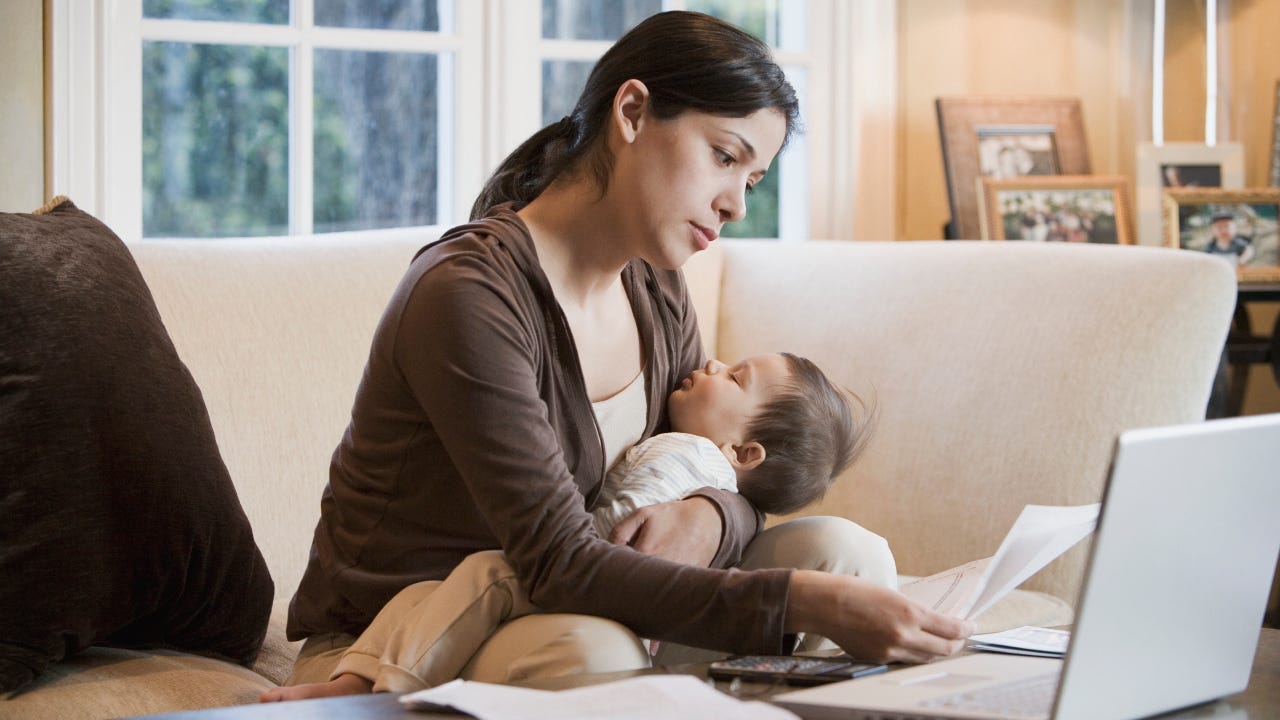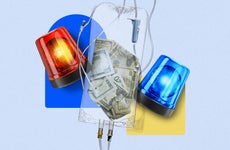Should you use a 0% intro APR credit card as an emergency fund?

The Bankrate promise
At Bankrate we strive to help you make smarter financial decisions. While we adhere to strict , this post may contain references to products from our partners. Here's an explanation for . The content on this page is accurate as of the posting date; however, some of the offers mentioned may have expired. Terms apply to the offers listed on this page. Any opinions, analyses, reviews or recommendations expressed in this article are those of the author’s alone, and have not been reviewed, approved or otherwise endorsed by any card issuer.
Key takeaways
- Building an emergency fund is important for unexpected expenses, but not everyone has the extra cash to do so.
- Using a 0 percent intro APR credit card can be a temporary solution to cover emergency expenses, but it's important to have a plan to pay off the balance before the promotional period ends.
- Carefully consider all options before using credit in an emergency, as doing so can lead to high interest rates and fees.
Most people can benefit from setting up an emergency fund. Once you’ve got a savings cushion in the bank, you can use it to cover emergency car repairs, unexpected medical expenses or temporary periods of unemployment.
However, not everybody has enough extra cash to deposit the recommended three-to-six months of living expenses into a high-yield savings account. If you’re building your career, paying off your debt or preparing for a big expense like a wedding or the birth of a child, setting aside an emergency fund might not be your first priority.
What should you do when you have an emergency but don’t have an emergency fund? Some people turn to 0 percent intro APR credit cards, which offer zero interest on purchases for as long as 21 months. By putting your emergency expense on a 0 percent intro APR card, you give yourself the opportunity to pay off your unexpected bill over time — without paying interest.
But can credit cards be an emergency fund? While credit cards can be used to cover an emergency expense, some personal finance experts don’t recommend this strategy. “Typically, no one should rely on a credit card to pay for emergencies,” says Andrea Woroch, a money-saving expert who provides budgeting advice for busy moms. “But the reality is, for many, a 0 percent intro APR card may be the best option to avoid high interest, if they lack savings.”
We asked Woroch how to use a zero-interest credit card to cover emergency expenses, without turning your unexpected expense into unnecessary debt — and how you can build your emergency fund quickly so you don’t have to rely on credit.
When can it make sense to use credit in an emergency?
If you have a history of using credit responsibly, you might be able to take on the challenges of using an 0 percent intro APR card as your emergency fund.
“If you’re in a tough financial position and struggling to make ends meet, a 0 percent APR card can bridge you through the tough time while avoiding additional fees and debt from racking up a balance,” Woroch says. “However, this must be managed wisely because it could snowball and put you into a worse position.”
Some people may be able to pay off their emergency bill in full before the 0 percent intro APR period ends, giving them the ability to cover their emergency without paying unnecessary interest charges. Other people may not be able to pay off their balance before the introductory zero interest period runs out and could find themselves stuck paying off a high credit card bill at high interest rates.
If you want to use a 0 percent intro APR card as your emergency fund, make sure you have a plan to pay off your balance in full before the 0 percent intro APR period expires. “Zero percent APR cards are perhaps not the absolute financial fix,” says Woroch. “But for most consumers, they can offer a lot of financial relief.”
When should you consider other options besides an emergency credit card?
If you’re not sure you can pay off your credit card bill in full, you might not want to use a 0 percent intro APR card to cover an emergency expense. That’s why it’s important to understand your options.
You may be tempted, for instance, to put an unexpected medical bill on credit, but a better option to consider is negotiating a monthly payment plan with your medical provider. If you have an unexpected car repair bill, you may be able to work out a monthly payment plan with your mechanic. If you need to purchase a new refrigerator to replace one that broke down, many big-box stores allow you to cover the costs on an installment plan. Plus, buy now, pay later (BNPL) services like Klarna give you the opportunity to pay off online purchases over time.
If you sign up for a payment plan that offers deferred interest, do your best to pay off the purchase in full before the interest rate kicks in. Unlike zero-interest credit cards, which only charge interest on any balance remaining after the promotional period ends, deferred interest payment plans can charge retroactive interest on the entire purchase — which could cost a lot more than you were expecting.
If you’re dealing with a financial emergency that can’t be paid off in installments, you still have options. Some people are able to cover emergency expenses by borrowing money from family and friends, and that might be the best solution if it’s available to you. You may also want to consider taking out a personal loan, especially if you have good credit and can secure a low-interest personal loan with an affordable monthly payment.
That said, be careful before turning to a payday loan or a cash advance. These services often come with extremely high interest rates and fees — nearly 30 percent APRs, in the case of a cash advance — and can be financially devastating to someone who is already cash-strapped during an emergency.
What are the downsides of using credit in an emergency?
There are many downsides to using credit in an emergency, including the possibility that you might not be able to pay off your bill before the interest charges start racking up. However, there’s one downside that many people overlook, and it has to do with whether your credit card application will be accepted. “Most good 0 percent APR cards require at least good credit,” says Woroch. “A zero-interest credit card isn’t a good option if you don’t qualify for one in the first place.”
Some people may try to apply for multiple zero-interest cards, hoping to be accepted for at least one of them — but this strategy is also a bad idea. Applying for a new line of credit usually requires a hard credit check, which will appear on your credit report. Racking up too many hard credit inquiries in a short period of time can hurt your credit score and prevent future applications from being accepted.
“Don’t apply for a bunch of credit cards at once, because that can backfire and ding your credit score even further, especially if you get denied from multiple card issuers,” says Woroch.
How do you choose a 0% intro APR card to cover an emergency expense?
If you’re thinking about applying for a 0 percent intro APR card to cover an emergency expense, use a tool like Bankrate’s CardMatch™ to compare offers. CardMatch also helps you get preapproved before you apply, giving you the opportunity to take out a new line of credit without worrying about your application being rejected.
Look for cards that offer not only a 0 percent intro APR, but also credit card rewards on the purchases you make most often. “I recommend using the CardMatch tool to find a credit card that matches your spending style and also gives you a good sign-up bonus, like free money if you spend a certain amount in the first few months of account opening,” says Woroch.
While some people prefer travel credit cards or retail credit cards, Woroch recommends taking a look at some of today’s best cash back credit cards — and putting your cash back rewards toward current or future emergencies. “Cash back rewards could help you boost your savings,” says Woroch. “Or, you could put them towards the emergency bill you charged to the card.”
How can you save an emergency fund quickly?
If you want to save for an emergency fund as fast as possible, you have options. “There are many ways to save up for your emergency fund, even when you’re carrying debt and on a limited budget,” says Woroch.
Start by taking a close look at where your money is going. “You may be wasting money on monthly bills without realizing it,” says Woroch. By canceling subscriptions, switching to lower-cost service providers and reducing your energy use, you could set aside a little extra cash every month — and put that money directly into your emergency fund.
Next, start looking for ways to earn more money. “It’s equally important to earn more income and boost your cash flow,” says Woroch. According to a recent study from Bankrate, 64 percent of Americans were able to increase their income between October 2022 and October 2023, often by negotiating a pay raise or finding a new job.
You may also want to consider picking up a side hustle, which can help you improve the amount of money coming in. “That extra cash means you don’t have to use a 0 percent APR card as an emergency financial resource,” Woroch explains.
Finally, see if you can use tools like balance transfer credit cards to reduce your monthly credit card bills and help you pay off your debt more quickly. “Debt payments are a necessary part of your monthly budget,” says Woroch. “But a balance transfer card gives you more time to pay off your debt while reducing monthly payments without interest fees racking up — and that means you could put the extra saved toward boosting your savings fund.”
The bottom line
Are credit cards good for emergencies? It depends. If you don’t have an emergency fund, a 0 percent interest credit card could help you cover an emergency expense — but make sure you have a plan to pay off your bill in full before the introductory period expires. Otherwise, you could end up paying high interest on your outstanding balance.
You may also want to focus on building your emergency fund as quickly as possible by cutting expenses, earning more money or using balance transfer credit cards to pay off outstanding debt. That way, you’ll have the cash you need before the emergency happens.
Related Articles



